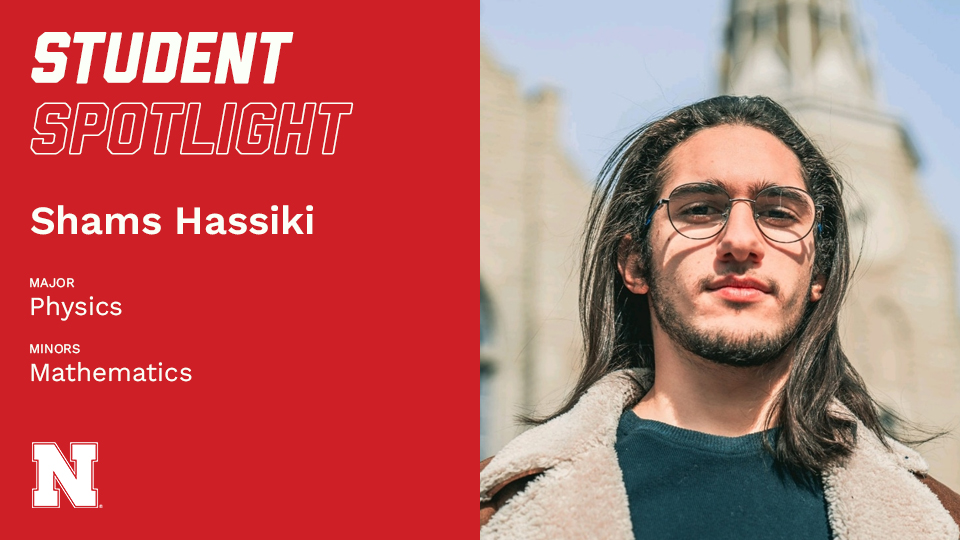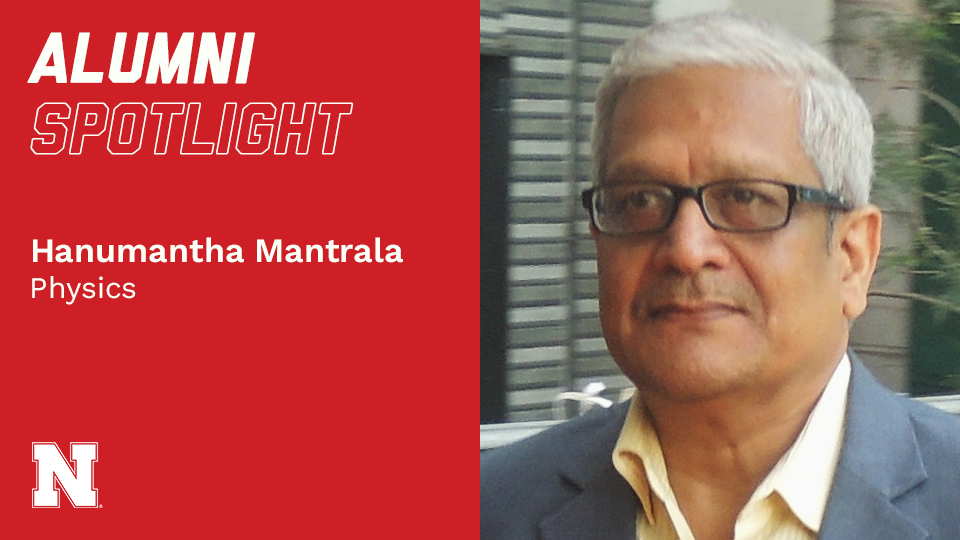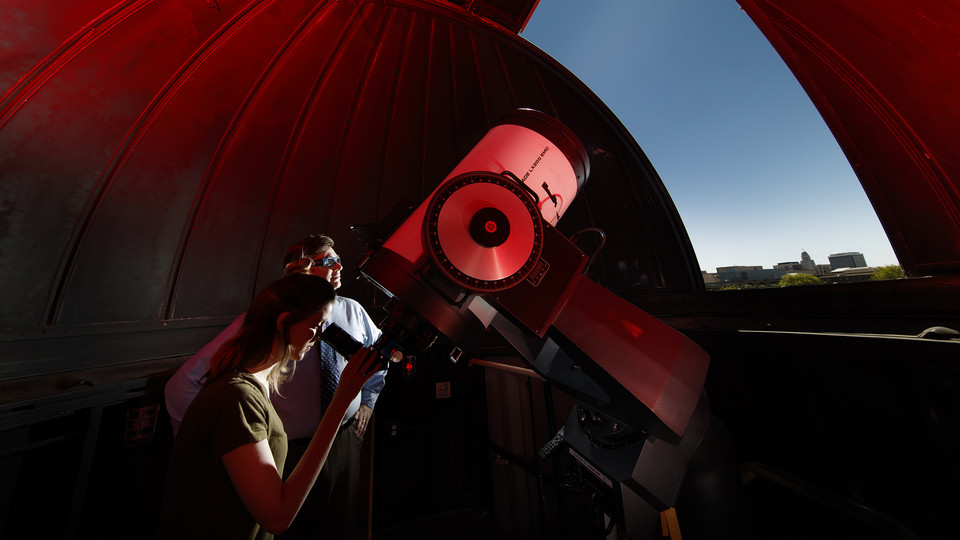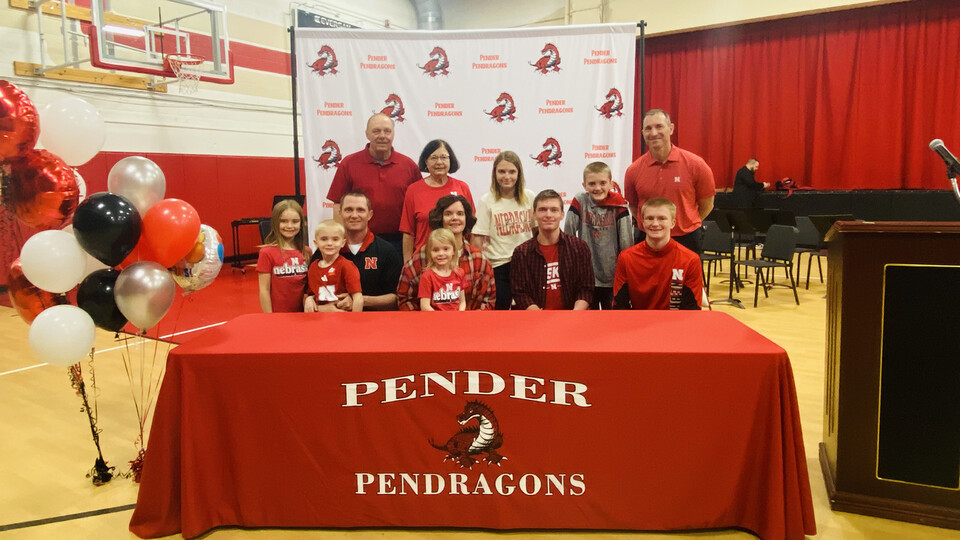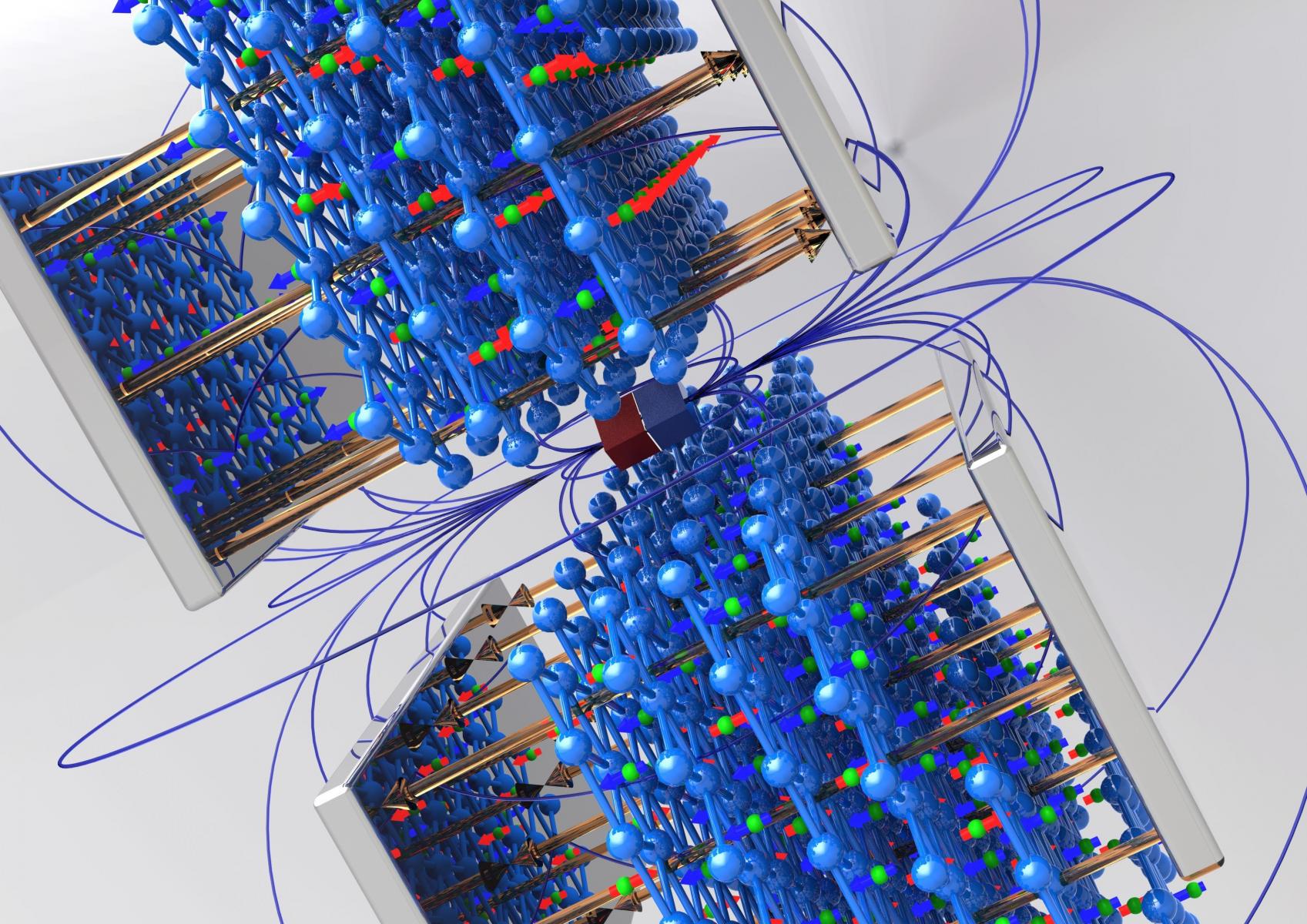
Christian Binek and Peter Dowben are not just colleagues in the UNL Physics Department. They are also colleagues in the Center for Spintronic Materials, Interfaces, and Novel Architectures (C-SPIN), a University of Minnesota-led team of 32 professors (and over 100 graduate students and postdocs) from 18 universities trying to restructure computers from the bottom up.
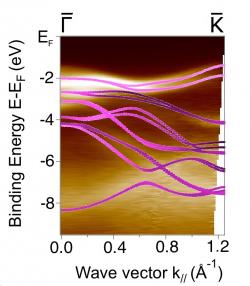 C-SPIN researchers want to use the “spin” of electrons - rather than electric charge - to encode zeros and ones. If they are successful, the computers of 2025 could be 10 times faster than today’s computers while using only one percent of their energy.
C-SPIN researchers want to use the “spin” of electrons - rather than electric charge - to encode zeros and ones. If they are successful, the computers of 2025 could be 10 times faster than today’s computers while using only one percent of their energy.
In particular, Professor Binek is developing low-power “switching” mechanisms for RAM functions of a spin-based computer. In other words, he’s trying to figure out ways to quickly change a spin-based “one” to a spin-based “zero” (and vice versa) without using much power. Given that even small RAMs (like the one on your smartphone) perform billions of switches per second, even small reductions in power requirements can add up to significant energy savings.
Most of Professor Dowben’s C-SPIN work is focused on measuring the properties of 2D materials – that is, sheets that are one-atom or one-molecule thick – as well as interfaces between two materials. After he determines which materials have the best electronic and “spintronic” properties, other C-SPIN researchers use these materials to make and test nano-sized devices. Dowben has also tested numerous material combinations for C-SPIN. As the picture above shows, 2D materials, when grown on a polar surface, sometimes cause significant changes to the electronic and spintronic properties of each material.
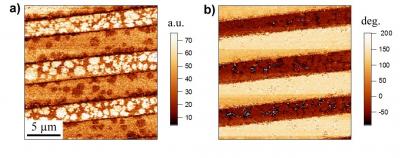 In any given month, Professors Dowben and Binek collaborate with each other and C-SPIN researchers from Minnesota, MIT, Wisconsin, California-Riverside, Carnegie Mellon, Johns Hopkins and other universities. And they can expect to continue to collaborate for quite some time: the Center just began its third year and will compete for a second five-year award in 2017.
In any given month, Professors Dowben and Binek collaborate with each other and C-SPIN researchers from Minnesota, MIT, Wisconsin, California-Riverside, Carnegie Mellon, Johns Hopkins and other universities. And they can expect to continue to collaborate for quite some time: the Center just began its third year and will compete for a second five-year award in 2017.
C-SPIN is one of six national Centers funded by the Semiconductor Research Corporation (SRC), a consortium of DARPA and sponsors from the computer industry. SRC creates and supports a number of collaborative research programs focused on emerging computing technologies.
